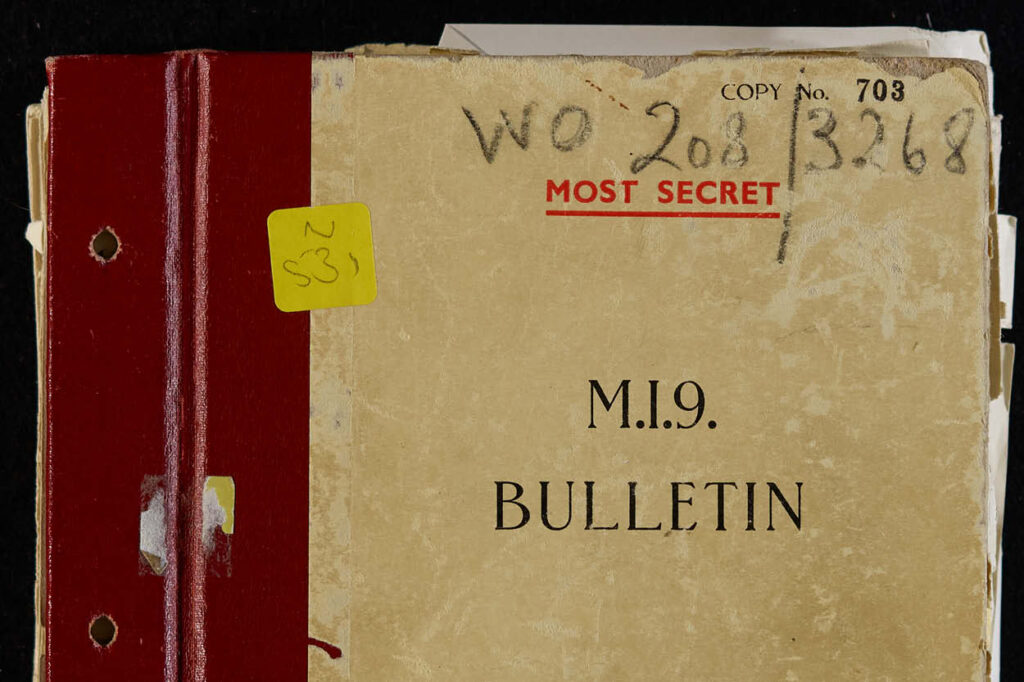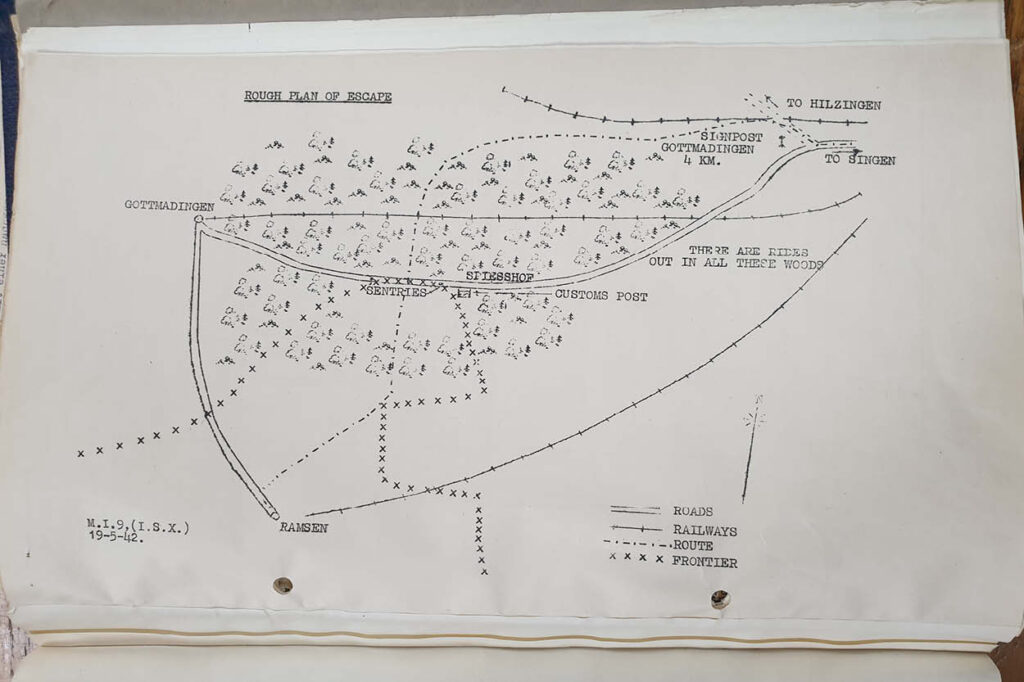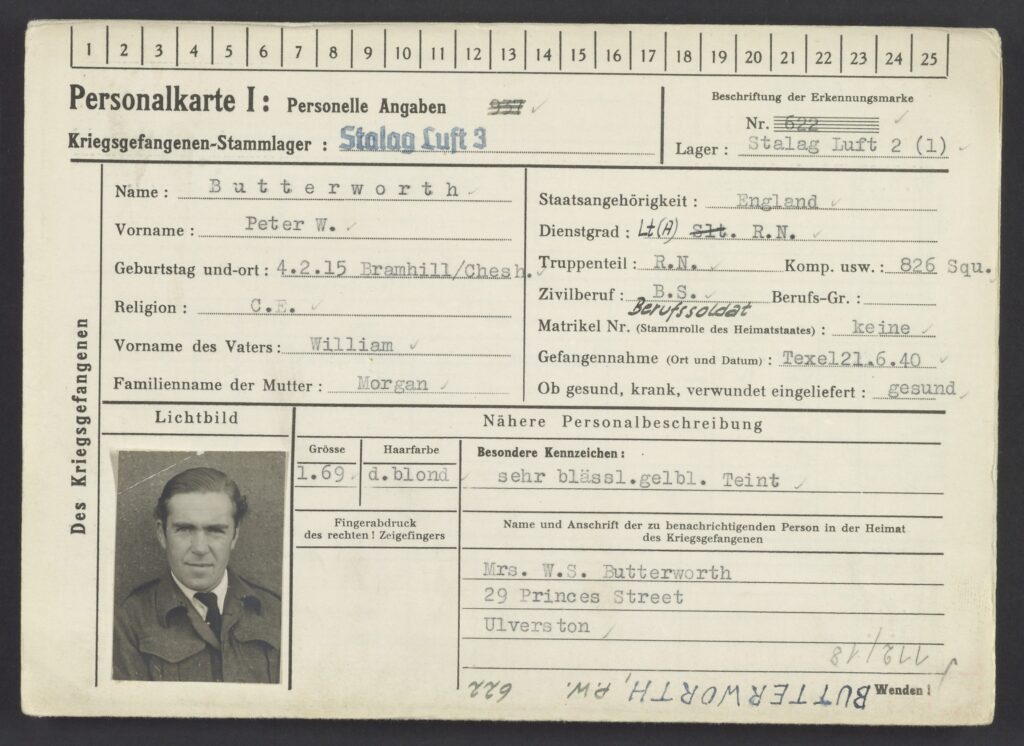Our new exhibition, Great Escapes explores the human spirit during captivity during the Second World War and features some incredible and iconic escape attempts that were made from the Prisoner of War (POW) camps.

Bulletin for MI9, catalogue reference: WO208 – 3268
The exhibition also features never previously displayed records from MI9 – the highly secretive British government agency set up in 1939 to help military personnel evade and escape capture – sending hidden escape aids to POW camps, creating escape routes and interviewing the few POWs who successfully escaped.
Here are some highlights of the escape stories included in the exhibition:
1. Bertram ‘Jimmy’ James
Jimmy James makes several escape attempts as a POW, most famously in the ‘Great Escape’ from Stalag Luft III – where he is one of hundreds of men, organised by the camp’s escape committee, involved in digging three tunnels, creating disguises, forging IDs and making 4,000 maps. Jimmy is responsible for depositing sand from the tunnels under the seats of the camp theatre.
2. Airey Neave
On 5 January 1942, 24-year-old Airey Neave knocks through the stage floor of the camp theatre and drops into the guard room beneath it. Wearing a fake German uniform and carrying forged papers and a compass, he walks out of the Colditz, the high-security POW camp, thought, wrongly, to be escape-proof. Airey was the first British officer to successfully escape Colditz.

Airey Neave Plan of Woods. Catalogue reference: WO208-3308
3. Oliver Philpot
On 29 October 1943, a hollow gymnastics vaulting horse made from Red Cross boxes is carried out to the exercise yard at Stalag Luft III camp by a few POWs. Squeezed inside are Oliver Philpot alongside Eric Williams and Michael Codner. They break the surface of the ground into a tunnel they’ve dug over the last 114 days. After escaping through the tunnel, they take cover in a pine wood then separate and Oliver, disguised as a Norwegian salesman, makes his way north to freedom.

Sketch of wooden horse used in escape from Stalag Luft III. Catalogue reference: WO373-95 (44)
4. Peter Butterworth
Peter Butterworth, a Lieutenant in the Fleet Air Arm of the Royal Navy is shot down over the Netherlands in 1941. In Stalag Luft III, he is admired for his sense of humour and helps establish the camp theatre, channelling his energy into directing, designing and performing on stage in shows including ‘Twinkle Twinkle Mr Star’ and ‘Escape’. The performances helpfully act as a cover for the sound of escape tunnels being dug.

A POW Record Card for Peter Butterworth. Catalogue reference: WO 416-53-114
5. Steffi Ehlert
Steffi Ehlert is one of 70 German officers who escaped Camp 198 in Bridgend in Wales, on the night of 10 March 1945, through a secret tunnel in what was the biggest mass escape in the UK during the war.
You can visit the free exhibition at The National Archives from 2 February to 21 July 2024, Tuesday to Sunday. Plan your visit.
Read about some of the fascinating survival stories featured in the exhibition.
Return to the homepage for the Great Escapes season.